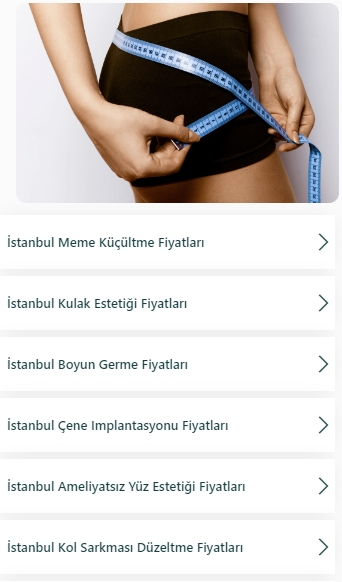
Facial Aesthetics: Rebuilding Beauty and Confidence
- Facial Aesthetics: Rebuilding Beauty and Confidence
- Types of Facial Aesthetics:
- Facial Aesthetics Procedure Steps:
Facial aesthetics is one of the most commonly preferred procedures in the field of plastic surgery, offering individuals the opportunity to reshape and rejuvenate their faces. These procedures are performed to reduce the effects of natural aging, address aesthetic concerns, or correct facial imperfections. In this article, I will discuss facial aesthetics.
Types of Facial Aesthetics:
- Rhinoplasty (Nose Aesthetics): The nose is a central part of the face and affects the overall balance and harmony of the face. Rhinoplasty is known as a procedure that corrects the shape and size of the nose.
- Facelift (Face Lift): Facelift is a procedure used to reduce signs of aging and address sagging skin, wrinkles, and lines. It may involve the lower face, neck, and forehead.
- Eyelid Surgery (Blepharoplasty): Sagging or puffiness of the eyelids is indicative of aging. Blepharoplasty involves the correction of both upper and lower eyelids.
- Lip Augmentation (Dermal Fillers): Lip augmentation is a procedure performed with injections to increase lip fullness or correct lip lines.
- Cheek Augmentation: Cheek augmentation is achieved by injecting fillers into the cheekbones to create a more defined facial structure.
- Chin Surgery: Chin surgery is performed to change the size, shape, or position of the chin and improve the balance and proportion of the lower part of the face.
- Non-Surgical Facial Aesthetics: Non-surgical facial aesthetics procedures aim to rejuvenate the face or correct flaws using non-surgical techniques. These include botox injections, dermal fillers, chemical peels, and laser treatments.
- Forehead Aesthetics: Forehead aesthetics include procedures to reduce wrinkles or enhance the forehead line. These procedures can be performed using techniques such as botox injections or forehead lifts.
For an ideal facial aesthetics outcome, one or more of these procedures can be performed, and the choice of procedure depends on factors such as the patient's age, skin type, and overall health. Therefore, when considering facial aesthetics, it is essential to consult with an expert plastic surgeon to determine the right option.

Facial Aesthetics Procedure Steps:
The steps of facial aesthetics procedures may vary depending on the type of procedure chosen, the patient's specific condition, and the surgeon's preferences. However, generally, the steps of facial aesthetics procedures may include the following:
- Consultation and Evaluation:
- The initial step involves a consultation and evaluation with a plastic surgery specialist. During this stage, the patient's expectations, medical history, current health status, and desires are thoroughly examined.
- The specialist may ask a series of questions to understand the patient's facial aesthetics goals and preferences.
- Factors such as the patient's age, skin type, alcohol and tobacco use, among others, are taken into account.
- Surgical Planning:
- After the consultation, the specialist creates a surgical plan. This plan is tailored to the patient's needs and goals.
- The plan includes the type of procedure, techniques, expectations, and potential risks.
- Preoperative tests and examinations may be conducted as needed.
- Surgical Procedure:
- The surgical procedure is typically performed under general or local anesthesia, depending on the type of procedure.
- In surgical procedures like rhinoplasty, facelift, and eyelid surgery, the expert surgeon makes specified incisions and may reshape or correct tissues.
- Non-surgical procedures (e.g., lip augmentation or botox injections) use non-surgical techniques.
- Recovery Period:
- After the surgical procedure, the patient begins the recovery process.
- Temporary side effects like swelling, bruising, and edema may occur. The duration of the recovery process varies depending on the type of procedure and the patient's individual factors.
- The patient receives care instructions from the surgeon, including activity restrictions.
- Follow-up and Monitoring:
- Throughout the recovery period, patients are regularly monitored by the surgical team.
- These check-ups are conducted to assess the results and monitor the healing process.
- If any issues or complications arise, necessary treatment and intervention are provided.
- Evaluation of Results:
- When the recovery is complete, the patient should have a more youthful, fresh appearance, aligned with their expectations and the surgeon's goals.
- Facial aesthetics procedures can help individuals feel better about themselves and rebuild their confidence. However, these procedures are serious surgical interventions and should be performed by an aesthetic surgery specialist.

Assoc. Prof. Dr. Çağlayan YAĞMUR
Plastic, Reconstructive and Aesthetic Surgery





